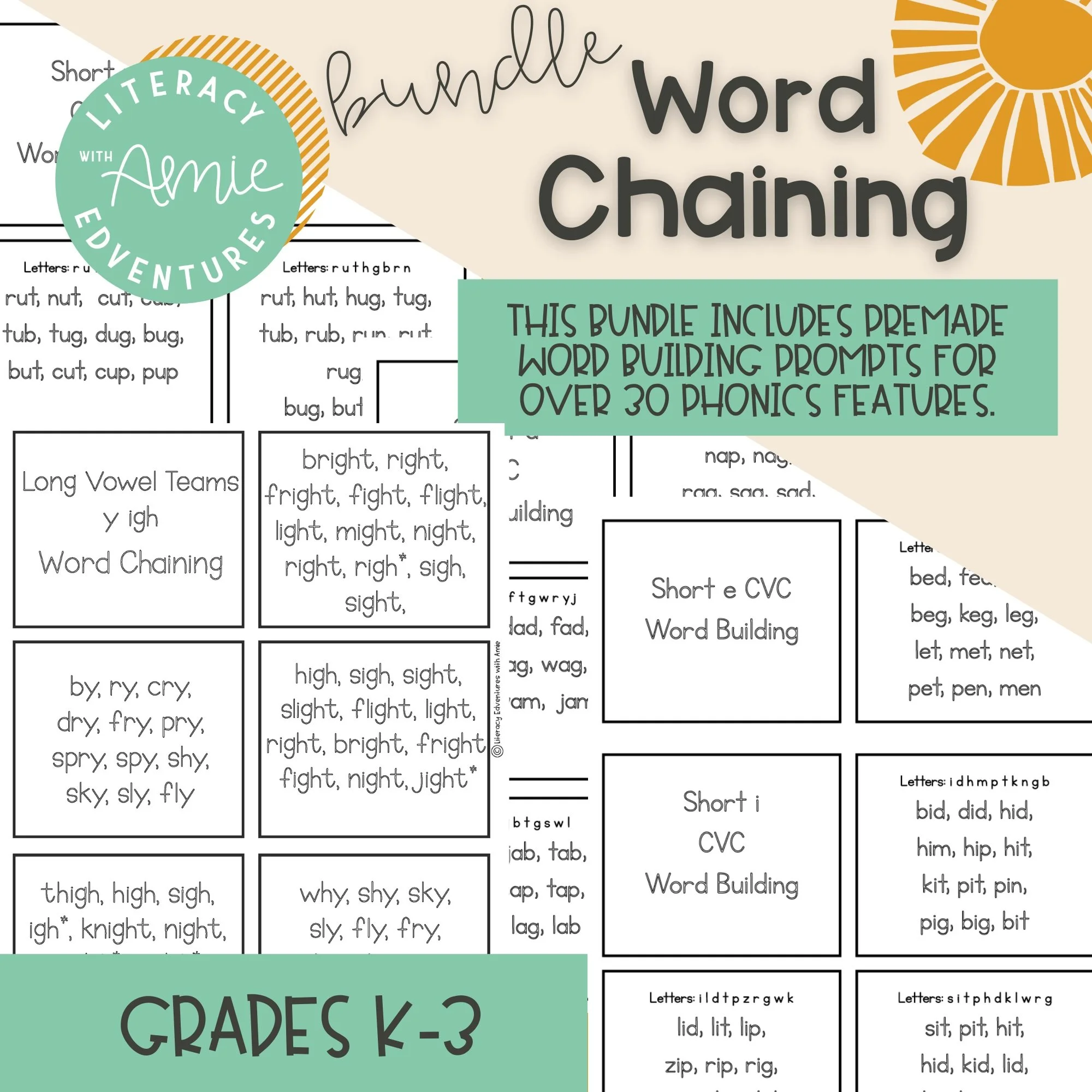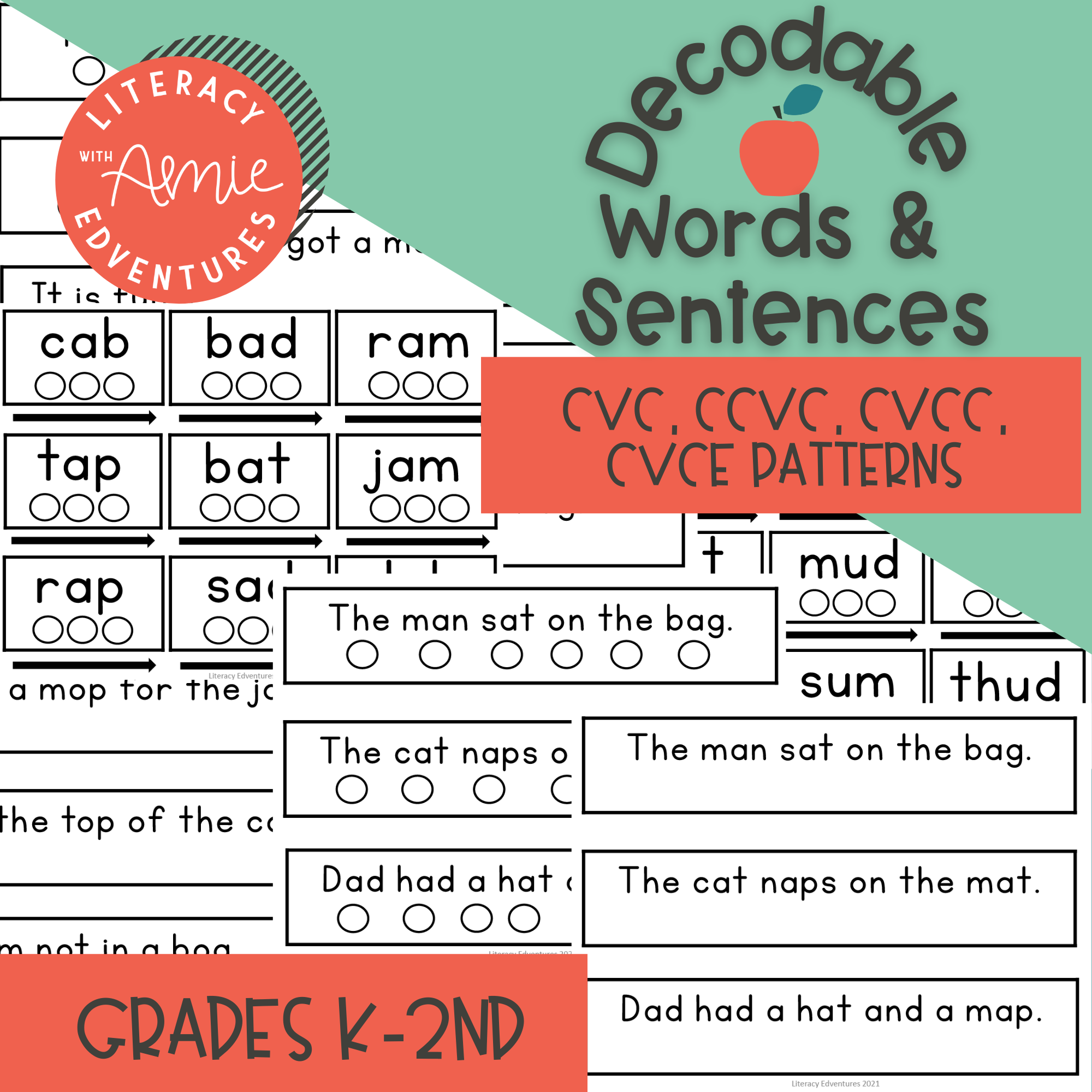My Favorite Phonics Activities
For those of you who know me, (which is most of you if you are reading this.😍) You know how much I love teaching children how to read. One of my favorite components to teach is PHONICS. I love teaching phonics because I feel that it is that one skill that helps bridge all the others! So today, I am going to walk you through my FAVORITE phonics activities!
When students are just beginning to “crack the code,” they need lots and lots of practice to become good at it! They also need consistency. This means that you use the same materials week after week (adding some flair) and just change the skill.
For example: If this week you are working on /short a/, you might use the activities below. Then next week, you use the same activities but your focus would be on /short i/.
Providing this explicit, systematic, consistent instruction will move your students into the direction you want them to go. Which is becoming successful readers.
Phonics Activities that WORK
Picture + Word Sorts
While this is my LEAST favorite activity, I do love it for introducing new phonics skills. I think having a combination of both pictures and words can help to make it more concrete for our students. We don’t want our students to rely too heavily on just sorting words. We want to make sure they think about the sound to symbol correspondence as well.
This is especially true for vowel sounds.
Fluency Grids
These are all about building that automatic word recognition. We not only want our students decoding, but we want them to do with automaticity as well. One of my favorite ways to practice is by giving kiddos a fluency grid and a sand timer. They see how far they can make it before the sand timer ends!
Word chaining
Word chaining is HANDS DOWN my favorite activity. I love it because it incorporates both phonics and those phonemic awareness skills. When students word chain, they have to think about both the sound and the print. The important thing to remember is that when students practice word chaining, they are only changing one sound at a time. Like this.
Spell /cat/
Change one sound to make it say /cap/
Change one sound to make it say /sap/
Add one sound to make it say /slap/
This type of activity forces students to activate both the sound (oral) and print (visual). Word chaining can be done with a white board or letter trays. I also love using Elkonin boxes!
Dictation
Dictation is the process of verbally telling a child a word or sentence to write. I now realize, that for the longest time, dictation was missing from my phonics routine. This is such a bummer when I think about it. Looking back, I wish I had used it every single day. But…if you know better do better. It is SO important to connect phonics with writing. We teach the phonics skill, we need to follow it up with encoding.
The problem is, it is really hard to come up with sentences that follow that skill and do not include skills we have not taught. That’s why I made THESE encoding + dictation helpers for my teachers. They can now easily add sentences and words into their lesson plans with minimal effort!
Decodables
Just as we have to connect our phonics skills to writing, we have to connect them to reading too. We have to give our students time in context to practice the skills. It is not enough to practice them in isolation. With that being said, some students need that gradual support. I always START with decoding in isolation, move to the sentence-level and then move to the passage or book level.
Last but not least…
Listen, teaching phonics is HARD. It is super involved and requires a lot of planning. If you are just getting started, choose ONE activity to do with your students and then work your way up to more. My goal for this post was not to overwhelm you but to provide you with practical easy to implement activities that support phonics. If you would like to implement these activities in your classroom, you can click the pictures below!




















